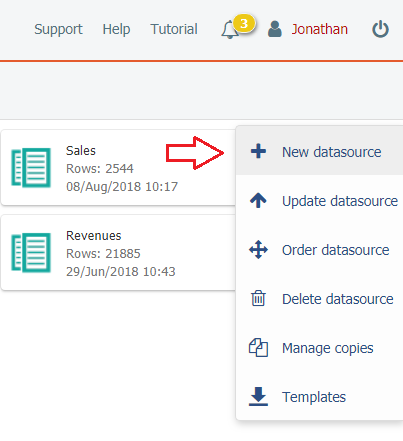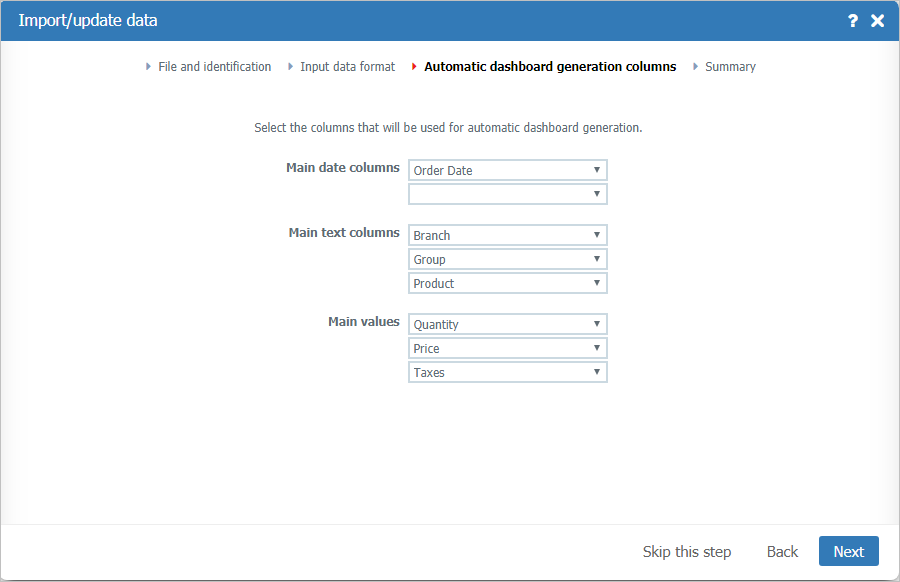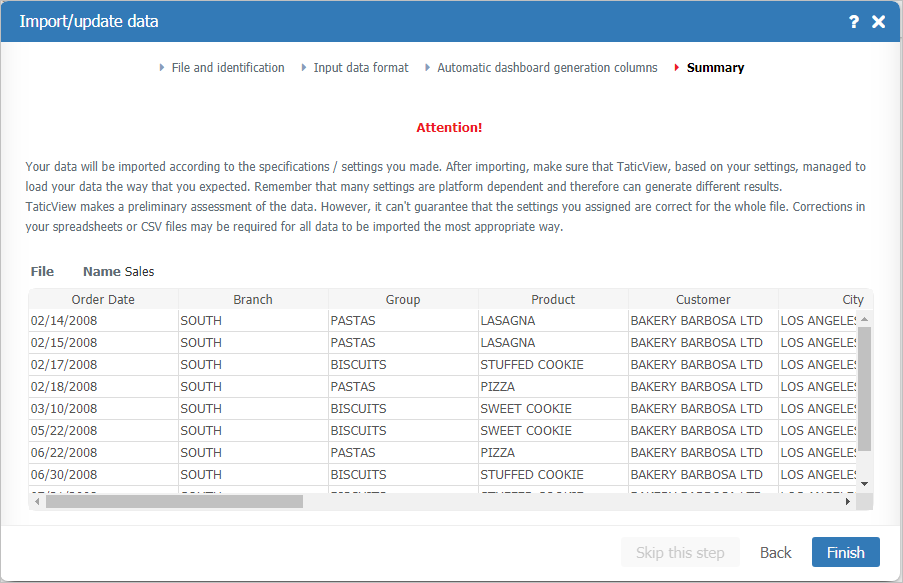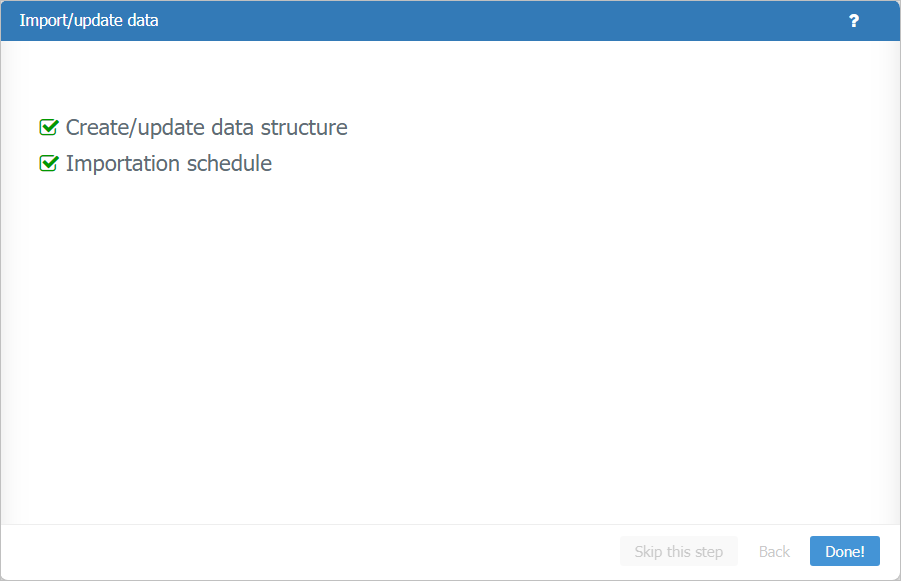Importing a New Data Source
This section will show you how to import a new data source.
See also:
- See a Tutorial
- Excel Importing Guide
- Check Importing Problems
- Data Update Automation
- Download a sample file here: Sales.xlsx
- Select the New Datasource option in the Menu (Sidebar) in the Main Page;

On the next screen.
- In the dialog window, select the Add new data source option;
- File: Choose the file to be imported. Click on the Browser button to search your computer for files. See Supported File Formats for more information;
- Name: Data source name. This is the name that will be displayed on the main page;
- Description: An optional description for the new data source.
If you have doubts, click on the links "Tutorial Video", "A sample spreadsheet" and other "Importing Tips".
Spreadsheet sample

Click Send File button to continue.
On the next screen, you must inform the file specifications.
See File and identification for information on how to continue.
Important
If you have problems importing, see Importing Problems.
- Delimited by: Specifies the columns delimiter character. Select between Tab, Semicolon, Collon or Another character (for Other type the desired delimiter in the field). Usually, the correct option is selected automatically. For CSV files only;
- Header: Check if the file has a Header row that identifies the columns. The header will be used as the default name for the columns in the data source;
- Decimal Separator: Specifies the decimal separator used in the file.
- Columns options: Click the column header in the preview table to select and change its options:
Notes:
- Is very important to set the right type for each column. When the type is not right, the word NULL will be shown in the cells.
- The Formula columns show the expression used in the spreadsheet or text file.
- When you add new columns in the imported file, the header color will be red.
- You can´t delete existing columns in the data source.
- In value columns, empty cells (NULL) will be converted to "0".
- In date columns, empty cells or not valid dates will be converted to NULL.
- In text columns, empty cells will be converted to NULL.
Click the Next button to continue.
If you are updating a data source, go directly to the import summary.
On the next screen, you can automatically generate a set of dashboards with your imported data.
The process will try to find compatible dashboards with the information you provided. New generated dashboards will have the ![]() icon.
icon.

Select the main Date, Text and Value columns that TaticView will use to automatically generate dashboards.
Click the Next button. To skip the automatic dashboards generation, click Skip step. You can do this later. See Generate dashboards.

Check the summary information and click the Finish button to complete the operation and schedule the data import.

Wait for TaticView to create/update the required structures and schedule the data import. If everything is ok, click the Done! button.
<explicar autorefresh>
Important: Data import is not allowed through tablets and smartphones.